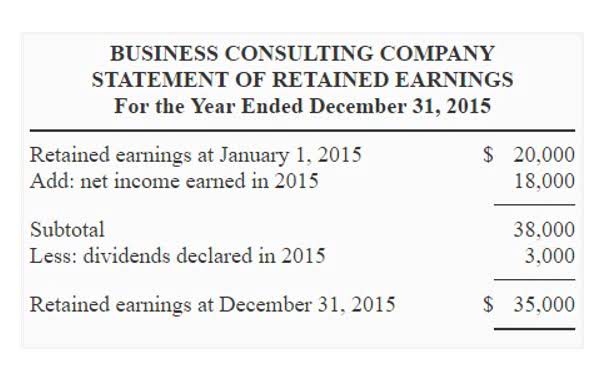
The primary benefit is that the inventory tracking and costing method is cheaper than the alternatives. The downside is that it involves manual steps, which increases the potential for error, and the inventory count becomes outdated the moment a sales or production transaction occurs. This approach also results in lack of accurate and timely financial reporting results in between each physical count and adjustment process. Typically, a contra-account will be used to transfer portions or totals of each cost center or department to inventory on the balance sheet. If, however, a winery is providing custom winemaking services to clients, a portion of the winemaking costs will be allocated from each cost center to the costs of custom winemaking services on the income statement. Whoever manages the accounting for the winery should have knowledge of how this is done within the company’s accounting software.

BusinessAdvisory & Strategy
- Wineries are a flourishing growth opportunity for accountants who are knowledgeable about the industry and can provide valuable financial, cost, tax, and risk management guidance.
- Cost accounting in vineyard operations is a nuanced process that requires a deep understanding of both agricultural and production costs.
- With a periodic inventory approach, COGS isn’t recorded until a count is done and ending inventory is adjusted.
- This includes keeping tabs on what materials and labor went into creating specific vintages and blends.
- We perform Audit, Review, Compilation, CPA Prepared, and Quality of Earnings work for your winery, lender or investors.
- Calculating the appropriate cost of production of a bottle of wine is crucial for this industry.
- Accounting is a crucial aspect of any industry, but its role in the wine industry is particularly significant due to the unique challenges and opportunities present.
Given the long production cycles and significant capital investment involved, accurate financial management helps wineries allocate resources efficiently and plan for the future. Common mistakes include not keeping accurate records, neglecting to track all expenses, and misunderstanding tax laws. To avoid these pitfalls, wine businesses should maintain detailed financial records, regularly review and update their books, and stay informed about relevant tax regulations.
- These factors necessitate specialized accounting knowledge and practices to ensure accurate financial reporting and regulatory adherence.
- The chart below lists expenditures that are commonly considered winemaking costs and some that aren’t.
- It is essential to account for all the costs of production, from grape growing, to harvest, to wine production, to finishing, in the proper costing of that bottle of wine.
- Another approach involves leveraging short-term financing options like lines of credit or seasonal loans.
SERVICES
- Another costing challenge with overhead is categorizing expenses that are commonly shared between departments.
- When costs aren’t easy to trace, it may be preferred to use an average, weighted average, or other ratio for applying costs.
- She ensured the quality control of deliverables aligning with GAAP and SSARS standards.
- With all the love and effort you put in, wanting to make a profit goes without saying.
- The difference between the revenue generated and the wine’s COGS is ultimately the gross profit on that wine.
- This extended timeline necessitates meticulous financial planning and management to ensure that resources are allocated efficiently and that the business remains solvent throughout the various stages of production.
They offer services such as financial statement preparation, tax planning, inventory management, and cost analysis. Utilizing these services can improve financial accuracy, compliance, and overall business efficiency, allowing winery owners to focus on production and growth. Key components of wine accounting for a winery include cost of goods sold (COGS), inventory management, and production costs. Accurate inventory management ensures proper stock levels and valuation, while tracking production costs helps in pricing strategies and profit maximization. Understanding Law Firm Accounts Receivable Management the financial health of a vineyard or winery hinges on tracking specific metrics that reflect both operational efficiency and market performance. One of the most telling indicators is the gross profit margin, which measures the difference between revenue and the cost of goods sold.
Lowering production costs

This data-driven approach helps optimize resource allocation, reduce waste, and capitalize on contra asset account market opportunities, leading to sustainable growth and competitive advantage. Understanding COGS helps wineries determine the actual cost of producing their wine, including raw materials, labor, and overhead. This insight is essential for setting appropriate pricing, managing budgets, and ensuring profitability. Accurate COGS calculations enable better financial planning and decision-making.

Accounting for the Cost of Making and Selling Wine
Given the high dollar value of many bottles of wine, it is not a surprise that many asset misappropriation schemes in the wine industry involve inventory theft. Classification of overhead costs can vary, depending on the size of the facility and whether there are shared uses of facilities by other revenue streams, such as facility winery accounting rental or custom crush services. Accounting for materials is typically straightforward in that the cost equals the price paid to acquire the materials, including tax and shipping costs to bring the materials to the production location. SPID and FIFO costing are the most common methods used in a winemaking environment, especially because wine is typically vintage-based and tracked down to the individual wine stock-keeping unit (SKU). To evaluate your winery’s performance, it’s essential to have insight into its profit margins.




